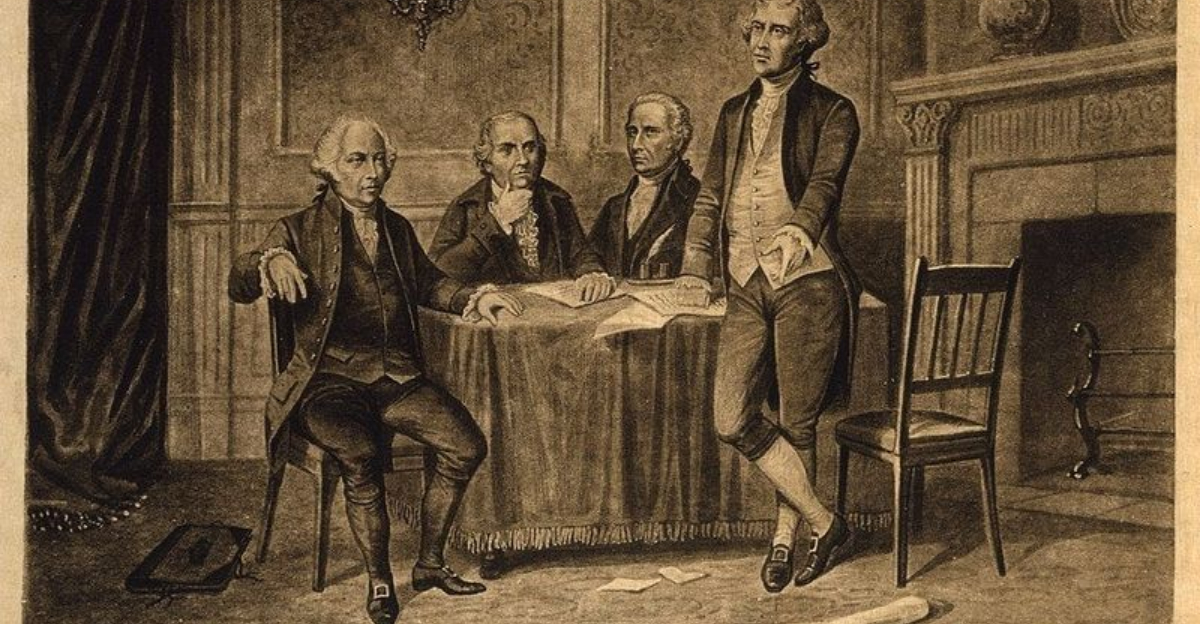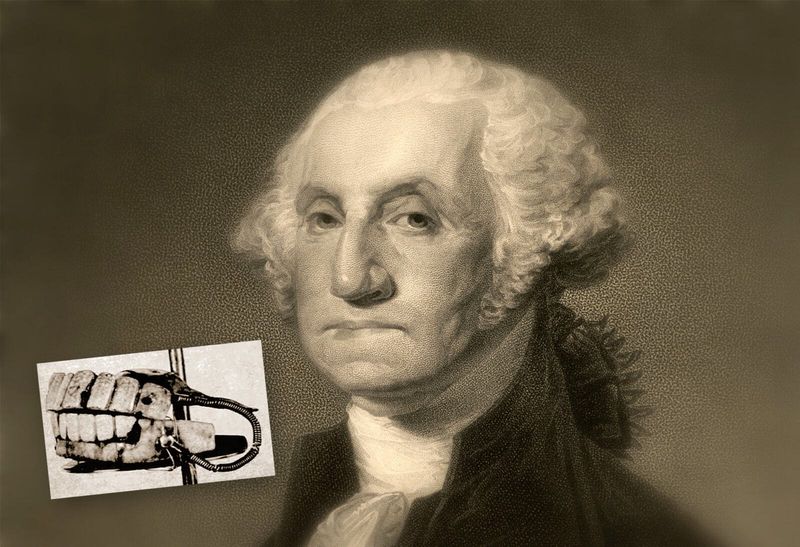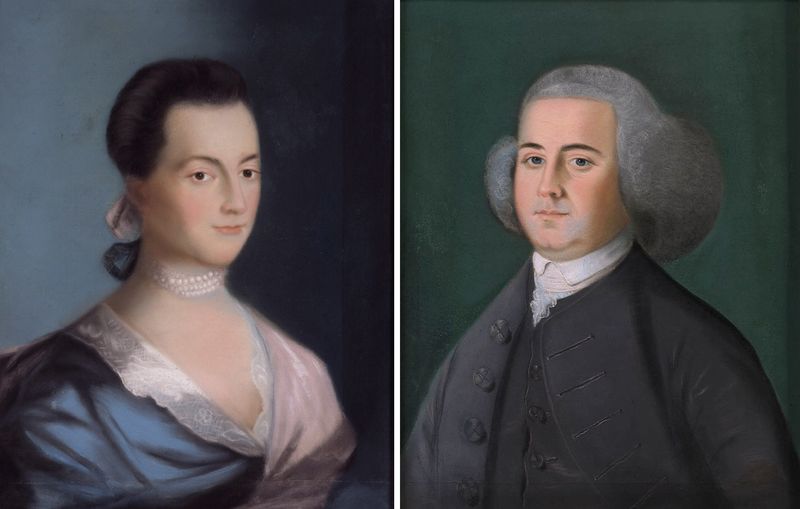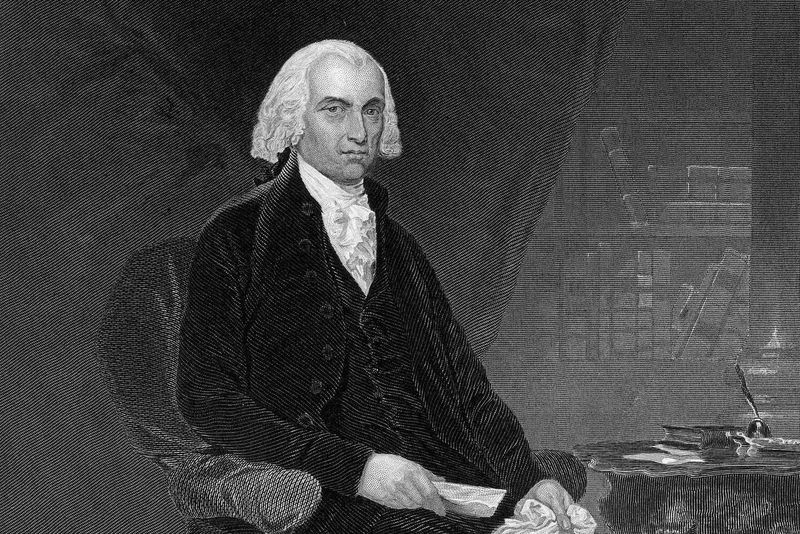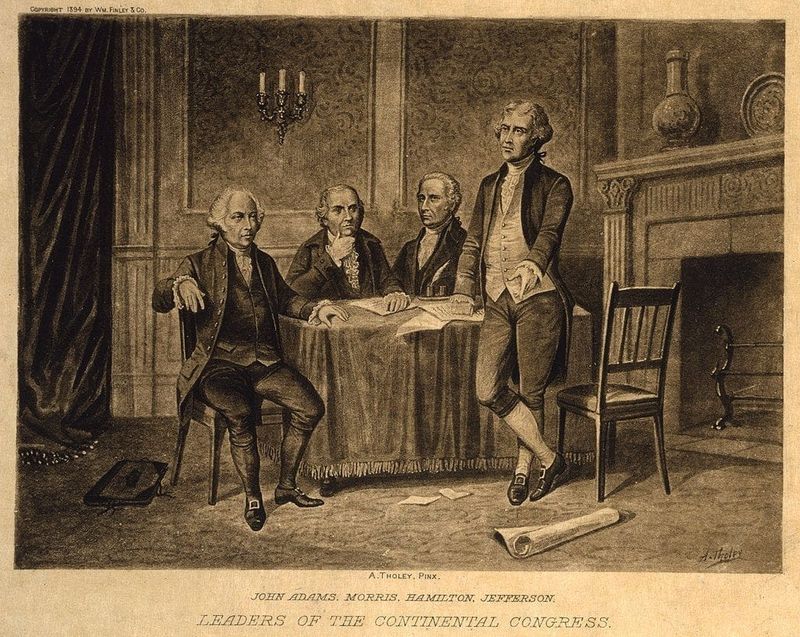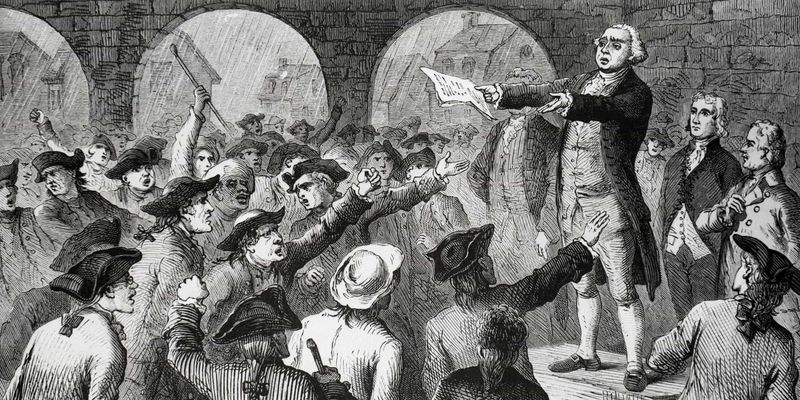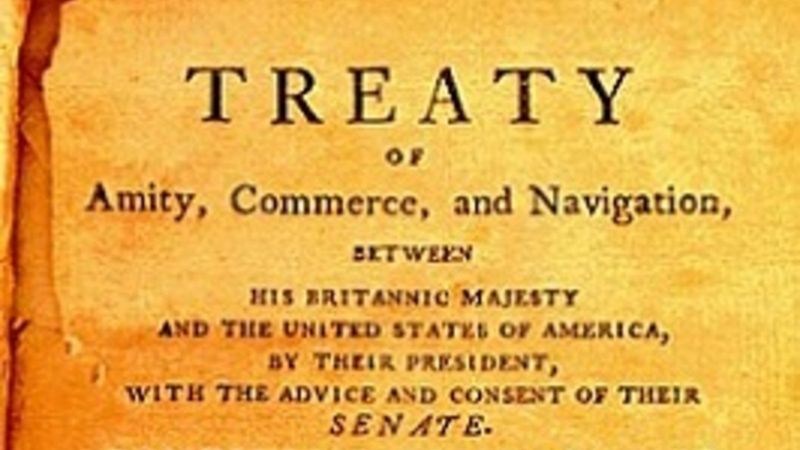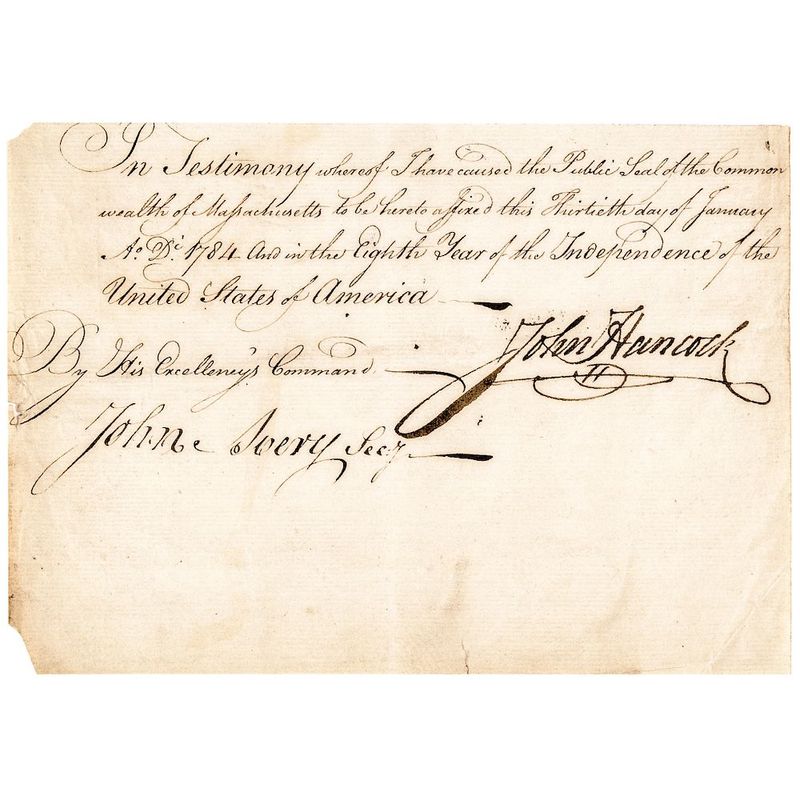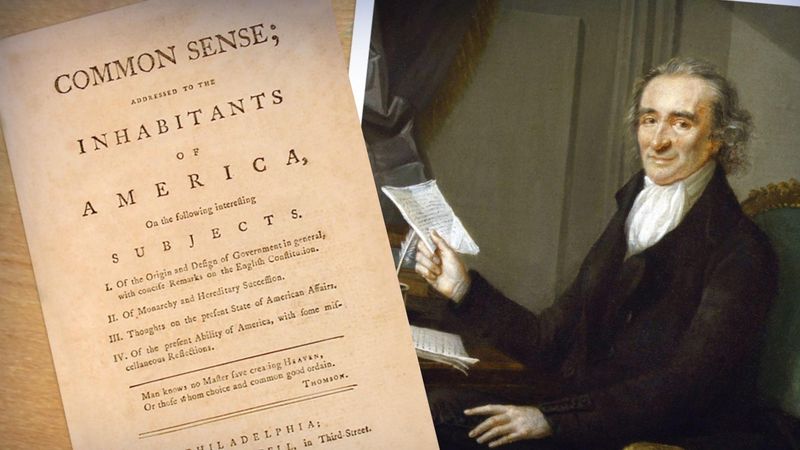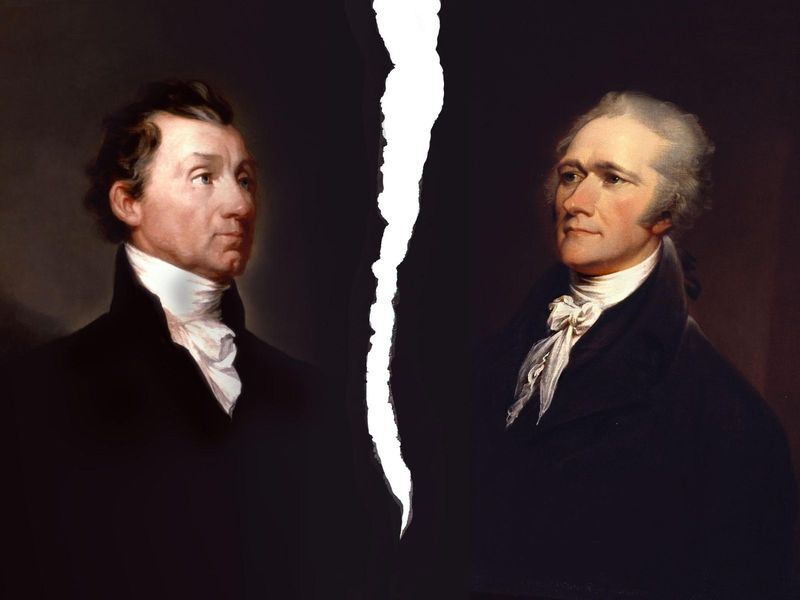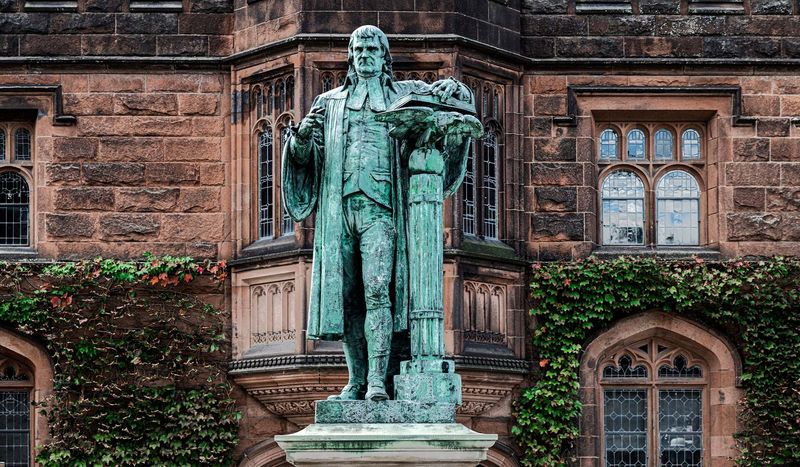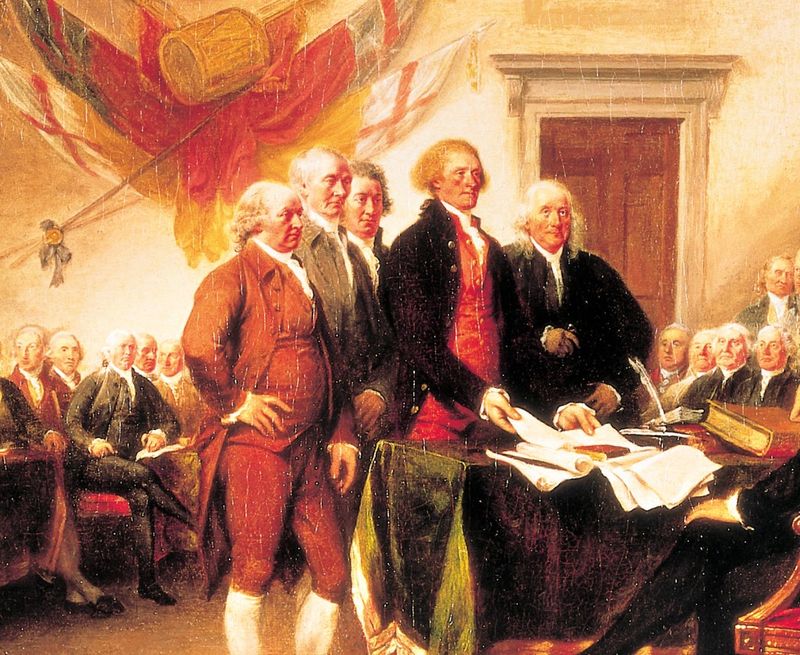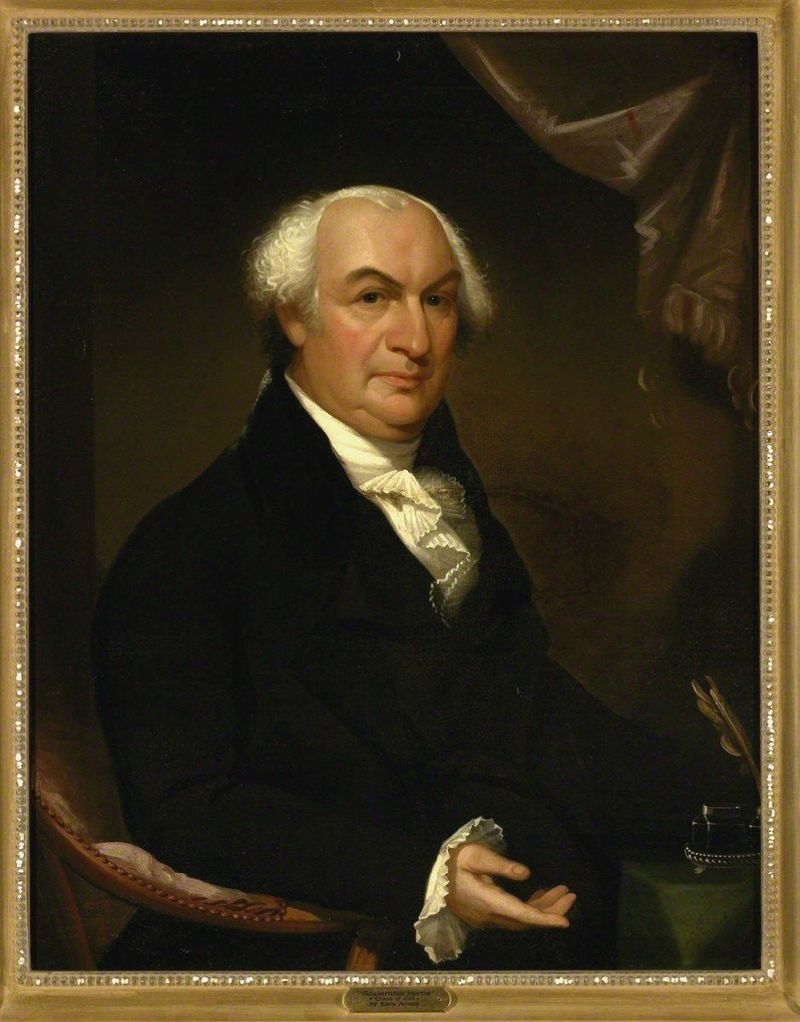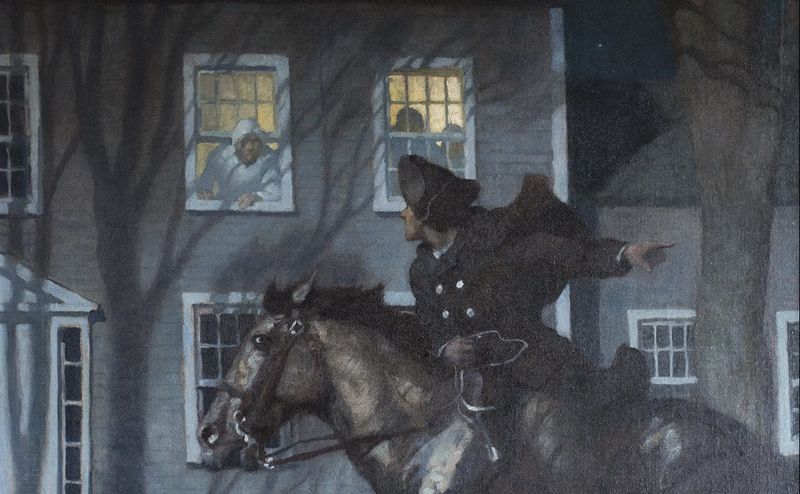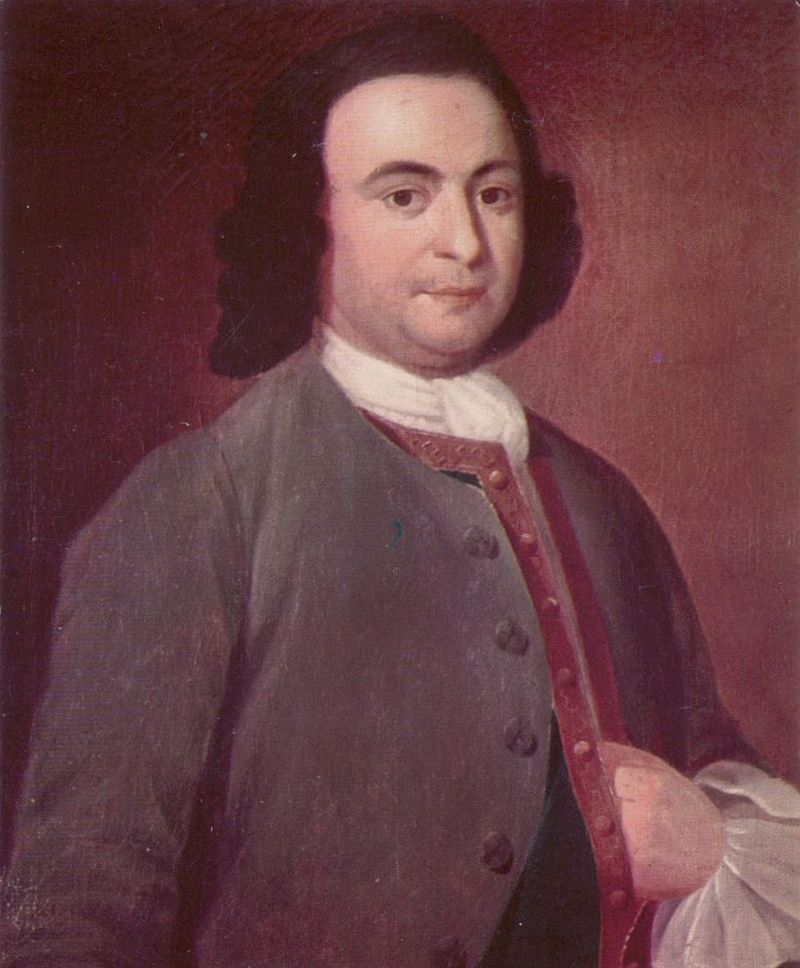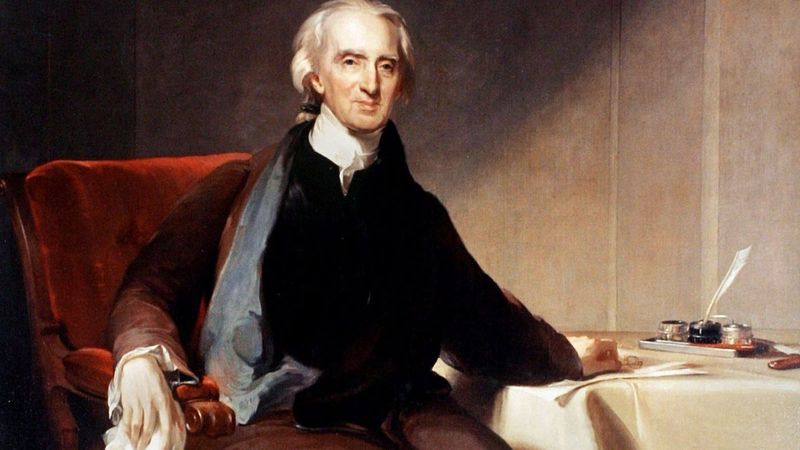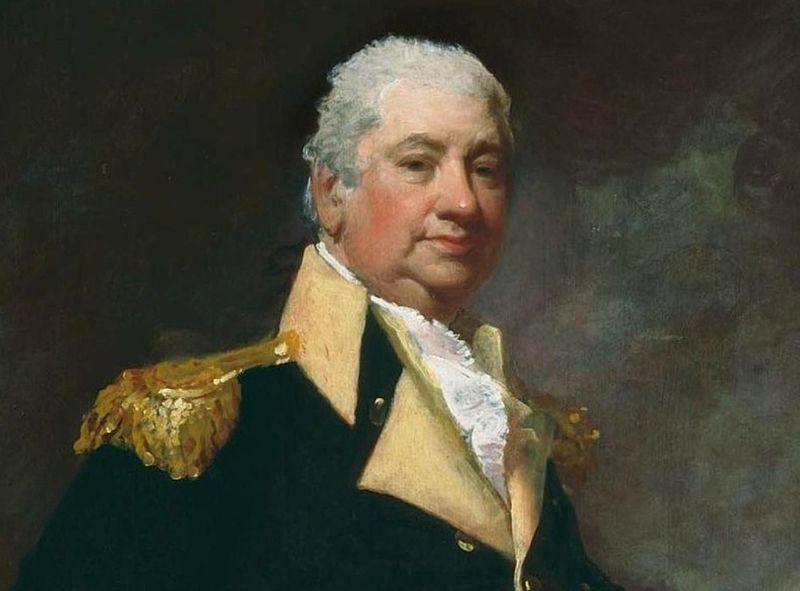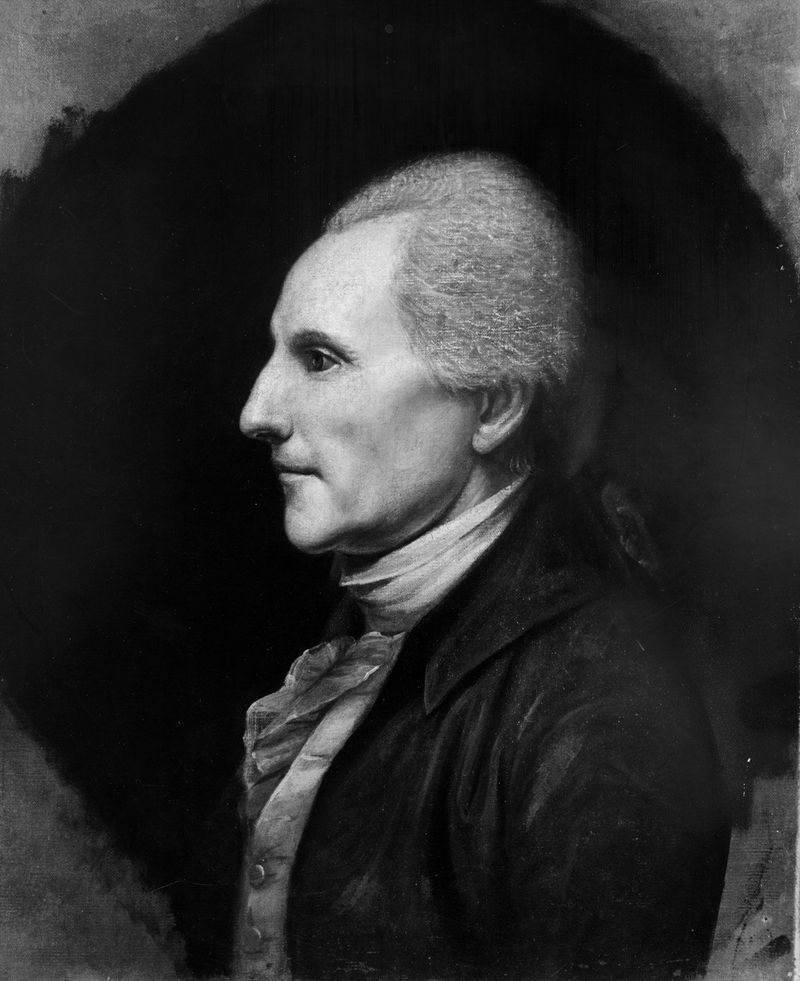Explore intriguing insights about the Founding Fathers that go beyond the history lessons. These 20 revelations uncover lesser-known truths about their lives, beliefs, and actions, portraying a fresh perspective on these pivotal figures in American history.
1. George Washington’s Dentures
George Washington, known for his leadership and integrity, had an interesting dental history. Contrary to popular belief, his dentures were not made from wood but were crafted from materials like ivory, human teeth, and metal.
These dentures caused him significant discomfort and affected his facial appearance. His dental woes were a constant struggle, highlighting the challenges even prominent figures faced in their daily lives.
This aspect of his life adds a human touch to the legendary leader, reminding us that even great heroes had their vulnerabilities.
2. Thomas Jefferson’s Secret Garden
Thomas Jefferson, the principal author of the Declaration of Independence, had a hidden passion for horticulture. At his Monticello estate, he meticulously curated a secret garden filled with exotic plants.
His love for gardening went beyond aesthetics, reflecting his belief in agricultural innovation and self-sufficiency. Jefferson’s garden was not just a personal retreat but also a living laboratory where he experimented with new crops.
This lesser-known aspect of Jefferson’s life showcases his commitment to progress and sustainability, traits that influenced his political ideology.
3. Benjamin Franklin’s Kite Experiment
Benjamin Franklin’s famous kite experiment is often simplified in textbooks. What many don’t know is the risk he took during his 1752 experiment to prove lightning is electricity.
He flew a kite during a thunderstorm while standing under shelter, ensuring he wasn’t struck. Franklin’s son assisted, and together they captured an electrical charge in a Leyden jar. This daring experiment was a pivotal moment in scientific discovery, highlighting Franklin’s innovative spirit and bravery.
His contributions to understanding electricity paved the way for future technological advancements, reflecting his enduring legacy as a scientist.
4. John Adams and Abigail Adams’ Letters
John Adams, the second U.S. President, had a long and deep correspondence with his wife, Abigail. Their letters offer a candid glimpse into their relationship, revealing their thoughts on politics, family, and society.
Abigail was not just a supportive spouse but also an intellectual companion, influencing Adams’ views. Their exchange, spanning decades, provides insight into the personal and political challenges they faced.
These letters highlight the couple’s resilience and the vital role Abigail played in Adams’ life, showcasing the strength of partnership in overcoming the era’s adversities.
5. James Madison’s War of 1812
James Madison, the ‘Father of the Constitution,’ had his presidency marked by the War of 1812. This conflict, often overshadowed in history, tested Madison’s leadership as the U.S. faced British forces. Despite initial setbacks, Madison’s resilience led to a renewed sense of national identity.
His handling of the war, including the burning of Washington, D.C., demonstrated his commitment to independence. Madison’s strategic decisions and diplomatic efforts post-war helped shape the young nation’s foreign policy.
This episode in his presidency underscores his determination and the complexities of leadership during wartime.
6. Alexander Hamilton’s Financial System
Alexander Hamilton played a crucial role in establishing the U.S. financial system. As the first Secretary of the Treasury, he introduced policies that laid the foundation for modern American economics.
His financial plans included the creation of the national bank and the implementation of tariffs to protect American industry. Hamilton’s vision faced opposition, yet his strategies were pivotal in stabilizing the young nation’s economy.
His forward-thinking approach and resolve in executing these plans underscore his lasting impact on American fiscal policy, highlighting his brilliance in economic strategy.
7. Samuel Adams’ Secret Society
Samuel Adams is often celebrated for his role in American independence, but his activities with the Sons of Liberty are less widely known. This secret society, founded to oppose British policies, played a key role in organizing protests and spreading revolutionary ideas.
Adams’ leadership in this group showcased his commitment to liberty and his ability to galvanize public support. The Sons of Liberty’s clandestine operations were instrumental in mobilizing colonists against British rule.
This aspect of Adams’ life reveals his strategic acumen and dedication to the cause of freedom, elements often overshadowed by his public persona.
8. John Jay’s Treaty Negotiations
John Jay, the first Chief Justice of the United States, was also a skilled diplomat. His negotiation of Jay’s Treaty in 1794 aimed to resolve lingering tensions with Britain post-Revolutionary War.
While controversial, the treaty averted war and facilitated ten years of peaceful trade. Jay’s diplomatic finesse and understanding of international relations were crucial in maintaining stability.
Although the treaty was unpopular, it underscored Jay’s commitment to peace and pragmatic governance. His work in diplomacy highlights his critical role in shaping foreign relations, a facet of his career often eclipsed by his judicial achievements.
9. Patrick Henry’s Oratory Skills
Patrick Henry, renowned for his ‘Give me liberty, or give me death!’ speech, was a master orator whose words sparked revolutionary fervor. His speeches were instrumental in rallying support for the American cause, showcasing his ability to inspire through rhetoric.
Henry’s persuasive skills extended beyond politics; he was a lawyer who skillfully defended clients. His oratory prowess reflected his deep belief in individual rights and liberty.
This talent for public speaking not only fueled revolutionary sentiment but also positioned Patrick Henry as a crucial catalyst in the push for independence.
10. John Hancock’s Bold Signature
John Hancock is best remembered for his prominent signature on the Declaration of Independence. This bold act symbolized his commitment to the American cause and defiance against British rule.
Hancock’s large, flamboyant signature was a deliberate statement, ensuring the king could see his name without spectacles. Beyond his signature, Hancock was a wealthy merchant who used his resources to support revolutionary activities.
His leadership and financial contributions were vital to the independence movement. Hancock’s signature, both literal and metaphorical, marks his enduring legacy as a resolute advocate for freedom.
11. Thomas Paine’s Influence
Thomas Paine, a political philosopher and writer, profoundly influenced the American Revolution through his pamphlet ‘Common Sense.’ This powerful work challenged British authority and rallied colonists towards independence.
Paine’s clear, persuasive arguments made complex ideas accessible, igniting revolutionary sentiment among ordinary citizens. His writings emphasized the necessity of independence and the creation of a new government.
Paine’s ability to communicate effectively through the written word played a crucial role in shaping public opinion. His contribution to the revolutionary cause underscores the power of media and ideas in driving social change.
12. James Monroe’s Duel
James Monroe, the fifth U.S. President, was involved in a lesser-known duel. Unlike the infamous Hamilton-Burr duel, Monroe’s conflict was with Alexander Hamilton’s brother-in-law, John Barker Church.
The duel arose from political tensions and personal disagreements. While both duelists fired, neither was injured, and the matter was resolved quietly. This event illustrates the intense political rivalries of the era and Monroe’s willingness to defend his honor.
Monroe’s involvement in a duel reflects the customs and codes of conduct prevalent among the political elite, offering a glimpse into the personal challenges faced by leaders.
13. John Witherspoon’s Educational Impact
John Witherspoon, a signatory of the Declaration of Independence, was also a revered educator. As the president of Princeton University, he influenced a generation of leaders.
Witherspoon emphasized a curriculum that blended classical and modern studies, preparing students for civic and public service. His role in shaping educational practices extended beyond academics; he instilled values of leadership and public responsibility.
Witherspoon’s impact on education highlights his contribution to nurturing the intellectual and moral framework of future American leaders. His legacy as an educator complements his political achievements, showcasing his commitment to nation-building.
14. Roger Sherman’s Compromise
Roger Sherman is credited with the Connecticut Compromise, a foundational element of the U.S. Constitution. This plan resolved the conflict between small and large states, proposing a bicameral legislature.
Sherman’s compromise balanced proportional and equal representation, ensuring fair governance. His pragmatic approach and negotiation skills were crucial in shaping the Constitution.
Sherman’s ability to mediate and find common ground reflects his dedication to unity and effective governance.
This compromise underscores the importance of collaboration and adaptability in political processes, highlighting Sherman’s pivotal role in the founding of the United States.
15. Gouverneur Morris’ Constitution Contributions
Gouverneur Morris played a key role in drafting the U.S. Constitution, notably penning its preamble. His eloquent language encapsulated the essence of the new nation’s ideals. Morris advocated for a strong central government to maintain order and unity.
His vision and writing skills were instrumental in shaping the document that governs the United States. Despite his significant contributions, Morris is less celebrated than his contemporaries.
His work emphasizes the power of words in defining a nation’s identity and underscores the collaborative efforts required to form a lasting government.
16. Paul Revere’s Midnight Ride
Paul Revere is famous for his midnight ride, alerting colonists of approaching British forces. However, the details of his ride are often romanticized. Revere was captured by British troops during his mission but managed to escape.
His ride was part of a larger network of riders spreading the alarm. Revere’s dedication and bravery were crucial in preparing militia forces for battle. This event illustrates the importance of communication and coordination in revolutionary efforts.
Revere’s ride remains a symbol of vigilance and patriotism, highlighting the collective action required to achieve independence.
17. George Mason’s Rights Advocacy
George Mason, often overshadowed by other Founding Fathers, was a staunch advocate for individual rights. He authored the Virginia Declaration of Rights, which influenced the U.S. Bill of Rights.
Mason’s insistence on safeguarding personal liberties and limiting government power was pivotal in shaping American political philosophy. His refusal to sign the Constitution without a Bill of Rights underscores his commitment to these principles.
Mason’s advocacy highlights the ongoing struggle to balance authority and freedom, a cornerstone of democratic governance. His contributions remind us of the essential nature of protecting individual freedoms.
18. Charles Carroll’s Longevity
Charles Carroll was the longest-lived signatory of the Declaration of Independence, reaching the age of 95. His longevity allowed him to witness the evolution of the nation he helped found.
Carroll was a wealthy landowner and influential political figure, offering support for independence despite his Catholic faith, which was marginalized at the time. His long life provided continuity and a living connection to the revolutionary era.
Carroll’s experiences reflect the enduring impact of the Founding Fathers beyond their immediate political achievements, showcasing the long-term influence of their contributions to American society.
19. Henry Knox’s Military Strategy
Henry Knox, a trusted military officer under George Washington, was instrumental in the success of the Continental Army. Knox orchestrated the remarkable transport of artillery from Fort Ticonderoga to Boston, a feat of engineering and logistics.
This strategic move was pivotal in the eventual American victory at the Siege of Boston. Knox’s ingenuity and leadership exemplified the resourcefulness required in the revolutionary struggle.
His military acumen and dedication to Washington’s cause were vital in securing American independence. Knox’s legacy as a strategic thinker highlights the critical role of logistics in warfare.
20. Richard Henry Lee’s Independence Resolution
Richard Henry Lee proposed the resolution for American independence in the Continental Congress on June 7, 1776. His bold motion set the stage for drafting the Declaration of Independence.
Lee’s advocacy for independence was rooted in his commitment to self-governance and liberty. Despite facing strong opposition, his determination ensured the resolution’s passage. Lee’s role in this pivotal moment underscores the courage and conviction required to challenge colonial rule.
His contributions were crucial in galvanizing support for independence, highlighting the importance of decisive leadership in revolutionary movements.
